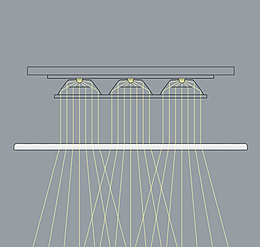
In physics, transmission refers to the passage of rays (light) through a medium. The measure for permeability is transmittance: this is the ratio of the transmitted luminous flux to the incident luminous flux. Similar to reflection, transmission can also be either directional or diffuse. Translucent materials are used in lighting technology to direct light, but also to model the spectrum.








